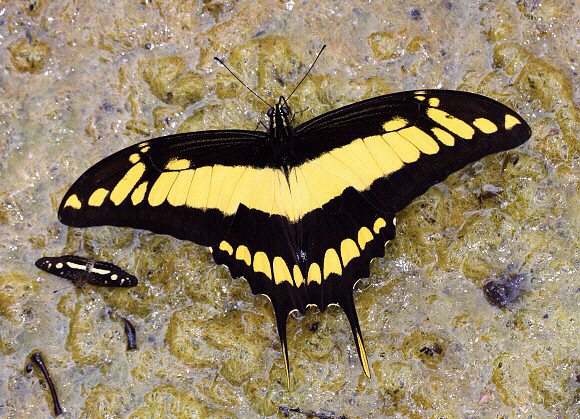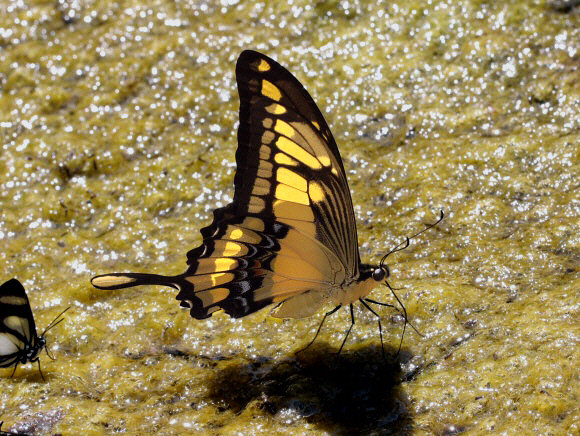
Introduction
The Papilionidae is comprised of about 600 known species. They are found throughout the world in almost every environment including deserts, mountains, grasslands, tropical rainforests, temperate woodlands, meadows, marshes and coastal dunes.
There are 3 subfamilies. The Parnassiinae consists of about 50 species. They are known as Apollos and breed mainly in mountainous areas of the northern hemisphere. The Papilioninae comprises of about 550 species distributed across the world, and includes the Swallowtails and Dragontails, and the giant Birdwings of south-east Asia. The other subfamily Baroniinae consists of a single species Baronia brevicornis which is endemic to the mountains of western Mexico.
Heraclides comprises of 28 species, and is the neotropical “sister” genus of the Holarctic Papilio, to which the European Swallowtail Papilio machaon, and the North American Black Swallowtail Papilio polyxenes belong. Some of the Heraclides species are marked with cream spots and bands, and have obvious affinities with their Holarctic counterparts. Others including anchisiades and isodorus are black with pink patches on the hindwings and are superficially similar to Parides and Eurytides.
Heraclides thoas is extremely similar in appearance to H. cresphontes, – the 2 species can only be distinguished by close examination of the abdominal tip. Their distribution differs, with thoas being distributed from Mexico to Bolivia and Argentina ( and as a rare stray in the southern USA ); while H. cresphontes has a more northerly distribution being found from Canada to Venezuela.
Habitats
This species is found in many different habitats including rainforest, cloudforest, deciduous forest, orchards and suburban zones at altitudes between 0-1200m.

Lifecycle
The egg is chestnut coloured, globular and smooth in texture. It is laid singly on the leaves or stems of Piper ( Piperaceae ) growing along forest edges, roadsides and riverbanks. The larva resembles a bird dropping. Like all Papilionid larvae it is equipped with an extrusible forked appendage called an osmaterium which is situated behind the head. This is everted if the larva is molested, and gives off a noxious pheromone containing isobutyric acid, which is used as a defence against ants.

Adult behaviour
Males are frequently seen on river beaches, dry river beds, damp sunny tracks and other places where they can imbibe mineralised moisture. Sometimes they are seen singly, but more often in small group of about 4-6 amidst aggregations of Pierids such as Phoebis, Aphrissa & Rhabdodryas.
Both sexes commonly visit flowers, showing a particular preference for Lantana. When feeding at flowers the forewings are constantly fluttered – a feature common to most Papilioninae wherever in the world they occur.
Copulation probably occurs in late afternoon – at Rio Frio in Venezuela I observed a copulating pair of thoas, settled with wings outspread on the foliage of a large-leaved bush just before dusk. On the same leaf were 3 other thoas, all with wings outspread and overlapping those of their neighbours.
